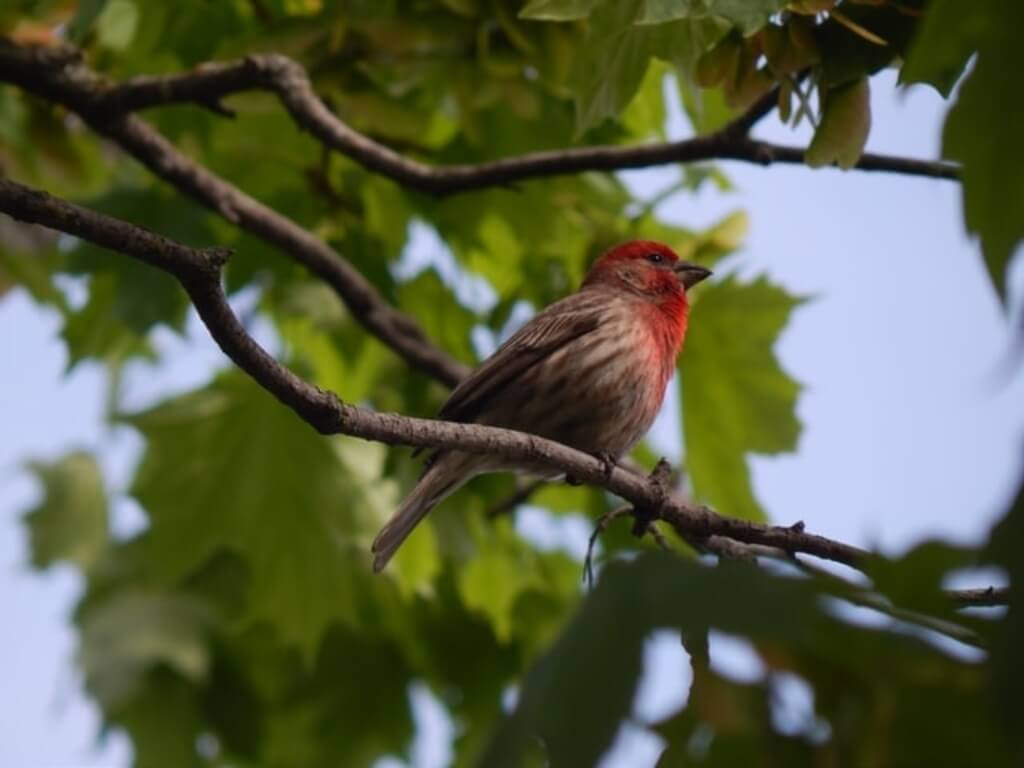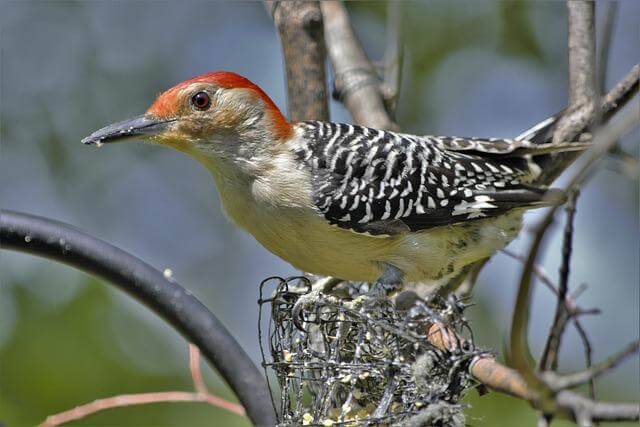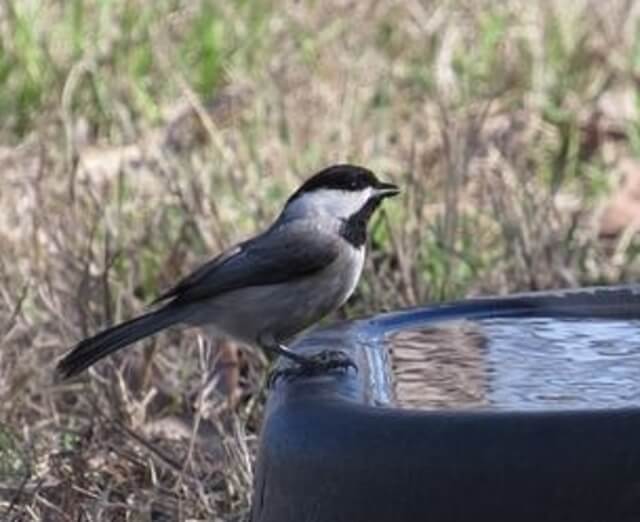Welcome to the world of birds and maple trees! In this exploration, we’ll check out 19 birds attracted to maple trees. From their cool leaves to the tasty seeds, these trees are like bird magnets. Join us as we uncover why these birds find maples so appealing.
It’s a simple journey into the connection between our feathered friends and the awesome maple trees that dot our surroundings. Let’s dive in and discover what makes these trees such popular hangouts for our avian neighbors!
Table of Contents
- 1 Maple Trees and Their Significance
- 2 Common Birds Attracted To Maple Trees
- 2.1 American Goldfinch
- 2.2 American Robin
- 2.3 Baltimore Oriole
- 2.4 Red Crossbill
- 2.5 Downy Woodpecker
- 2.6 Evening Grosbeak
- 2.7 Northern Cardinal
- 2.8 Pine Siskin
- 2.9 Pileated Woodpecker
- 2.10 Purple Finch
- 2.11 Red-eyed Vireo
- 2.12 Red-bellied Woodpecker
- 2.13 Rose-Breasted Grosbeak
- 2.14 Scarlet Tanager
- 2.15 Yellow Warbler
- 2.16 Pine Warbler
- 2.17 Yellow-Bellied Sapsucker
- 2.18 Carolina Chickadee
- 2.19 Black-capped Chickadee
- 3 Author
Maple Trees and Their Significance
Maple trees play a pivotal role in the ecosystem, offering both sustenance and shelter that significantly impact the lives of various bird species. These trees provide an essential habitat for nesting, offering a secure environment for birds to build their nests and raise their young. The intricate structure of maple branches and leaves creates a protective canopy, shielding birds from predators and the elements.
Moreover, maple trees serve as a vital source of food for birds throughout different seasons. In spring, their blossoms attract pollinators, initiating a chain reaction that supports the insect population, a primary food source for many bird species. As the seasons progress, the seeds, sap, and insects found in and around maple trees become crucial components of avian diets, ensuring the well-being and survival of diverse bird communities.
Common Birds Attracted To Maple Trees
American Goldfinch
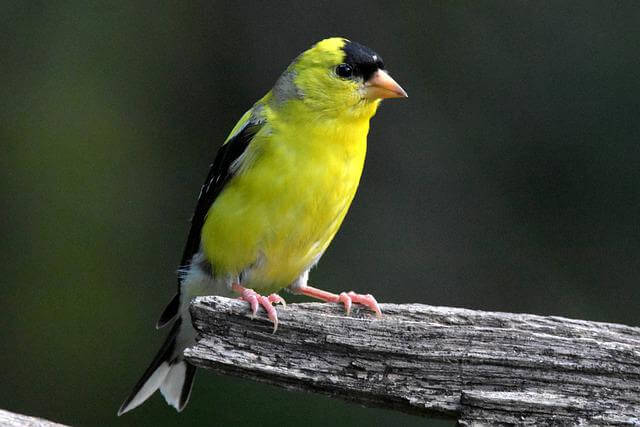
The American Goldfinch (Spinus tristis) is a small North American bird that ranges from southern Canada to northern Mexico. It is a common backyard bird that can be found in open areas with trees, such as parks, woodlands, and residential areas. The diet of the American Goldfinch consists mainly of seeds, but they will also consume insects, berries, and nectar.
One of the most distinctive features of the American Goldfinch is its yellow and black plumage. They are also easily recognized by their pointed wings and loud song.
The American Goldfinch can be found in several habitats across its range, but it prefers areas with trees where it can find food and shelter. In the fall, you can often see flocks of American Goldfinches feeding on the winged samaras of maple trees.
American Robin
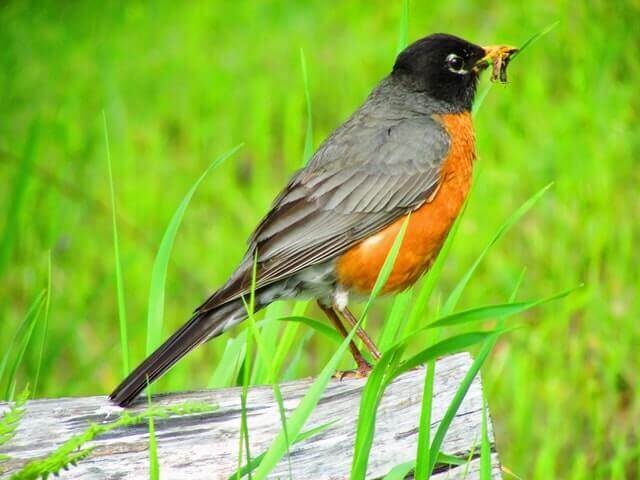
The American Robin is a North American bird that is found in every state except Hawaii. They are common in cities and suburbs, but can also be found in rural areas. They live in open areas with trees and bushes for nesting and foraging.
The diet of the American Robin consists mostly of insects, but they will also eat fruit, berries, and seeds. The Robin’s range extends north to the arctic tundra, and they are year-round residents in most of their range.
However, some robins migrate to Florida or California during the winter. Robins build their nests out of dried grasses, twigs, and leaves in trees or bushes. The female typically lays four or five eggs, which are incubated by both parents for 12-13 days.
Baltimore Oriole
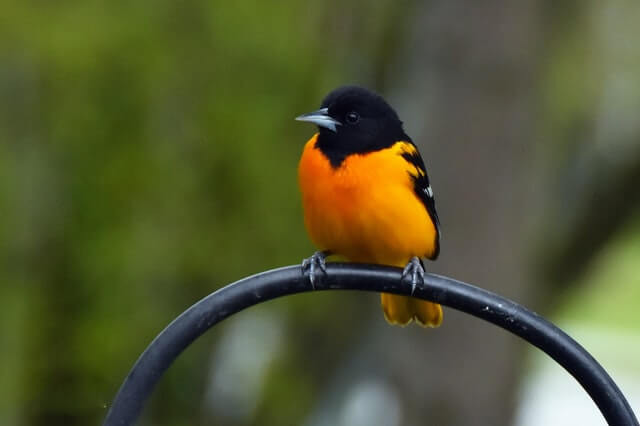
The Baltimore Oriole is a migratory songbird that is found in eastern North America. They are common in the eastern United States, but can also be found in parts of Canada and Mexico.
The Baltimore Oriole is a beautiful bird that has a bright orange body with black head, wings and tail. They are known for their beautiful singing voice, and they can often be heard singing from high up in the trees.
The Baltimore Oriole prefers to live in deciduous forests, where they can find plenty of insects to eat. They often nest in maple trees, where they can build their nests high up off the ground. The Baltimore Oriole diet consists mostly of insects, but they will also eat fruit and seeds.
Red Crossbill
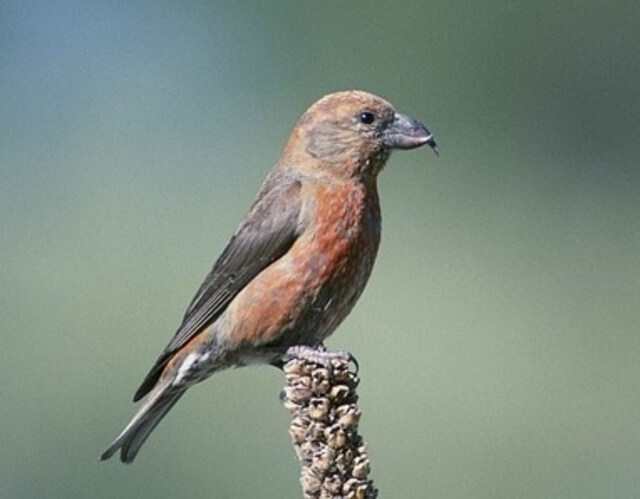
The Red Crossbill is a common North American bird that can be found in a variety of habitats, including forests, parks and gardens. These birds are known for their unusual bill, which is curved downwards and crossed at the tips.
This adaptation helps the Red Crossbill to pry open the scales of conifer cones to extract the seeds inside. The diet of the Red Crossbill consists mainly of insects, but they will also eat seeds, berries, and other plant material.
Red Crossbills are also known for their preference for maple trees, where they feed on the insects that live in the tree’s bark and sap. In late summer and fall, these birds can be seen congregating at maple trees in large flocks
Downy Woodpecker

The Downy Woodpecker is a small North American bird that are about 6-7 inches long and have a wingspan of about 11 inches. It ranges from southern Canada to northern Mexico, and from the Atlantic coast to the Great Plains.
Downy Woodpeckers live in a variety of habitats, including woodlands, parklands, and suburban areas. They nest in tree cavities, usually excavating their own holes, but they will also use natural or man-made crevices.
Downy Woodpeckers forage on insects that are found on trees, often drilling into the bark of dead branches to get at hidden prey. They are common in maple trees, where they feed on the sapwood and larvae of beetles, ants, beetles, caterpillars, and aphids.
Evening Grosbeak

The Evening Grosbeak is a North American bird that is found in open woodlands, residential areas, and parks. These birds are around 9 inches in length and have a wingspan of approximately 16 inches.
The Evening Grosbeak’s diet consists mainly of insects, but they will also eat seeds and fruit. Maple trees are a favorite food source for these birds, as they provide a variety of insects that the Evening Grosbeaks can feed on.
In addition to maple trees, these birds will also forage from other types of trees, such as oak and birch. The Evening Grosbeaks typically nest in coniferous trees, such as pine or spruce. These birds are monogamous and will typically have 2-3 broods each year.
Northern Cardinal
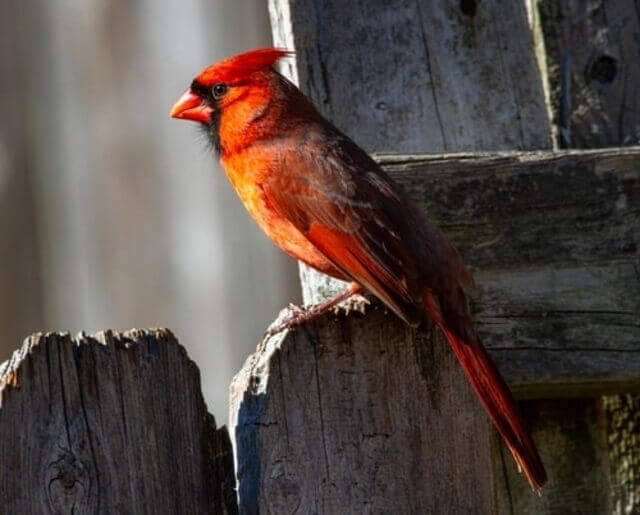
The Northern Cardinal is a songbird that is found in North America. This bird is typically red in color, with a black mask on its face. The Northern Cardinal can be found in a variety of habitats, including forests, wetlands, and even urban areas. This bird is known for its beautiful singing voice, and it is also known for being monogamous-meaning that one male and one female typically mate for life.
The Northern Cardinal builds its nest out of materials like twigs and grasses, and the female cardinal typically incubates the eggs while the male brings her food.
Cardinals are omnivorous birds, meaning that they eat both insects and plants. Cardinals will often feed on insects that are found around maple trees, and they will also eat the sap from these trees.
Pine Siskin
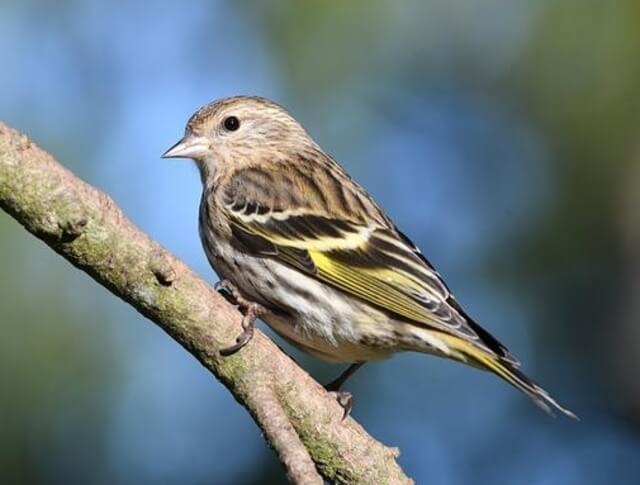
The Pine Siskin is a small songbird that ranges throughout North America. They are generally found in open habitats such as fields, meadows, and parks, but can also be seen in residential areas.
These birds are very adaptable and have been known to use a variety of different trees for nesting and foraging, including maple trees.
Siskins are insectivores and primarily feed on insects that they find while foraging in trees. In the spring and summer, they can be seen raiding spider webs in search of prey. Siskins will also eat seeds and fruit when they are available.
Pileated Woodpecker

The Pileated Woodpecker is a large woodpecker that is found in eastern North America. It ranges from southern Canada to Florida, and west to Texas. The pileated woodpecker inhabits both deciduous and coniferous forests, as well as parks and suburban areas.
This woodpecker is a cavity nester, and will excavate its own nest hole in a dead tree or snag. It also uses abandoned holes of other animals, such as squirrels or bluebirds. The female lays 3-8 eggs, which are incubated for 14-16 days.
The young leave the nest about 28 days after hatching. The diet of the pileated woodpecker consists mainly of insects. They will forage on maple trees for various insects, including ants, beetles, and caterpillars. They will also consume fruit and nuts.
Purple Finch

The Purple Finch is a small North American songbird that ranges throughout the eastern and central United States and southern Canada. The bird inhabits open woodlands, parks, and gardens.
The Purple Finch constructs a cup-like nest out of thin strips of grass, twigs, and moss. The female lays four to six eggs, which are incubated for 12 to 14 days. The chicks are fledged in about two weeks.
The diet of the Purple Finch consists mainly of insects. They forage for insects on the branches and leaves of maple trees. They also eat seeds, berries, and fruit.
Red-eyed Vireo
The Red-eyed Vireo is a common songbird that can be found in open woodlands, parks and gardens across eastern and central North America. These birds are usually easy to identify by their bright red eyes and olive-green and white plumage.
Red-eyed vireos are insectivores, meaning they primarily eat insects. They often forage for insects in maple trees, where they can be seen plucking caterpillars and other bugs off the branches.
Red-eyed vireos typically nest in the upper canopy of deciduous trees, building a small cup-shaped nest out of grasses, stems and leaves. The female lays 2-4 eggs in the nest, which both parents incubate and care for until the chicks fledge.
Red-bellied Woodpecker
The Red-Bellied Woodpecker (Melanerpes carolinus) is a medium-sized woodpecker that ranges throughout most of the eastern United States and parts of southeastern Canada. This species inhabits deciduous forests and woodlands, as well as urban and suburban areas.
They are cavity nesters, and typically nest in dead trees, but have been known to use boxes or even nesting ledges on buildings.
The diet of the Red-Bellied Woodpecker consists mainly of insects, which they forage for by drilling into tree bark. In addition to maple trees, they will also feed on other hardwoods, such as oak and hickory.
Rose-Breasted Grosbeak
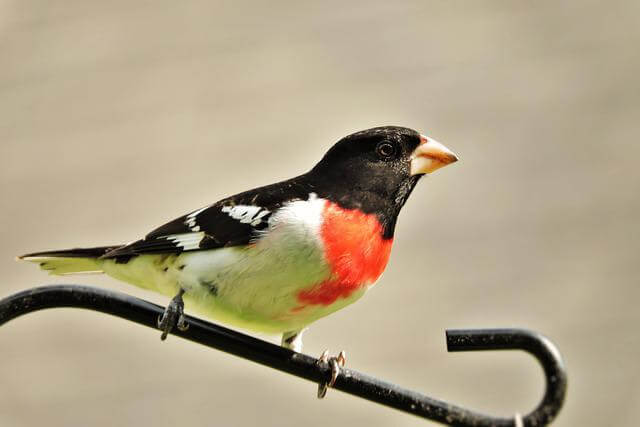
The Rose-breasted Grosbeak is a medium-sized songbird that ranges across much of North America. They prefer to live in open woodlands, but can also be found in parks and gardens.
These birds are monogamous and build their nests together in trees, typically choosing a maple. The female Rose-breasted Grosbeak lays 4-5 eggs, and both parents take turns incubating them and feeding the chicks once they hatch.
Young birds leave the nest about two weeks after hatching, but remain dependent on their parents for another few weeks. These grosbeaks mainly eat insects, which they glean from tree branches. They also eat seeds, berries, and some small fruits.
Scarlet Tanager

The Scarlet Tanager (Piranga olivacea) is a migratory songbird that breeds in eastern North America. The bird’s range extends from southeastern Manitoba and southern Ontario south to Texas and Florida. Scarlet Tanagers are common in woods, parks, and gardens.
They typically nest in deciduous trees such as maple, oak, or beech, making a loose cup of twigs lined with grasses and rootlets. The diet of the Scarlet Tanager consists mainly of insects, which they glean from foliage and branches.
However, the birds will also eat fruit and seeds when available. In late summer and fall, they often forage in maple trees for sap-sucking insects such as aphids and scale insects. This is beneficial to the trees because the sap-sucking pests can damage or kill them.
Yellow Warbler
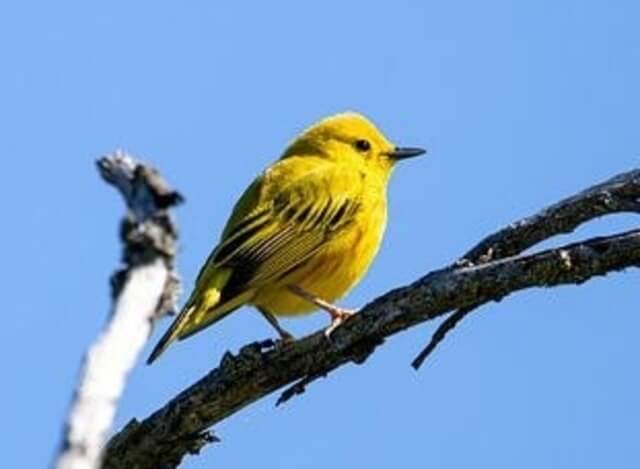
The Yellow Warbler (Dendroica petechia) breeds in North America and migrates to Central America and the Caribbean in the winter. The male warbler is easily identified by its bright yellow color, while the female is a duller yellow.
These birds can be found in deciduous and mixed forests, as well as parks and gardens. They typically nest in trees, often near water, and lay 4-5 eggs.Yellow Warblers forage for insects mainly on maple trees.
They eat a variety of insects, including caterpillars, beetles, flies, and spiders. In addition to insects, they also consume berries and other fruit. These birds are important predators of insect pests, which makes them beneficial to humans.
Pine Warbler
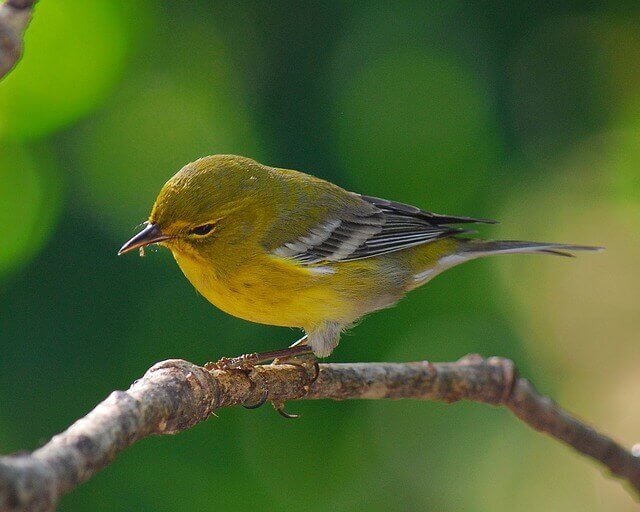
The Pine Warbler (Dendroica pinus), a migratory bird species, breeds extensively in the eastern half of the United States. Its breeding range spans from central New York and southern Ontario in the north to southeastern Nebraska in the west, and southward to Texas, Florida, and even as far north as southern Maine. During winter, these vibrant birds embark on a migration journey, seeking warmer climates and extending their range from central Mexico to Central America.
This warbler is a common breeder in a variety of forest types, including oak-hickory woods, pine barrens, and mature hardwood stands. Maple trees are an important food source for pine warblers during both the breeding season and winter.
In spring, these birds feed on insects that are found on maple leaves. During winter, they consume sap from maple trees. The sap is high in sugar and provides a valuable source of energy for these birds when other food sources are scarce.
Yellow-Bellied Sapsucker

The Yellow-Bellied Sapsucker is a medium-sized woodpecker that ranges throughout North America. They prefer to live in deciduous forests and woodlands, but can also be found in parks and gardens. These birds are cavity nesters, meaning they build their nests inside of preexisting holes in trees.
The female lays 4-8 eggs, which the male incubates for about two weeks. Once the chicks hatch, both parents feed them until they are able to fly out of the nest and fend for themselves.
Yellow-Bellied Sapsuckers typically eat insects, but will also consume fruits and nuts on occasion. In fall, they often feed on sap from maple trees. This diet makes them an important species for dispersing pollen and propagating new maple trees.
Carolina Chickadee
The Carolina Chickadee is a small songbird that is found in the eastern United States. This bird is around five and a half inches long and has a black cap and bib, white cheeks, and grayish upperparts.
The Carolina Chickadee’s range extends from Maine south to Florida, and west to Texas. This species inhabits deciduous forests, mixed forests, and open woodlands.
Carolina Chickadees are insectivores, and their diet consists of insects, spiders, seeds, nuts, and fruit. These birds build their nests in trees, typically maples or other hardwoods.
Black-capped Chickadee

The Black-capped Chickadee is a small songbird found in North America. This bird is common in forests and woodlands, and can also be found in parks and gardens. The Black-capped Chickadee’s range extends from Alaska to Newfoundland, and from California to Manitoba.
This bird prefers to live in habitats with dense coverings, such as trees, shrubs, or vines. The Black-capped Chickadee diet consists mostly of insects, but the bird will also eat seeds and berries.
This species typically nests in cavities in trees, such as those made by woodpeckers. However, Black-capped Chickadees have been known to nest in man-made structures, such as birdhouses.

